Nek Chand Garden
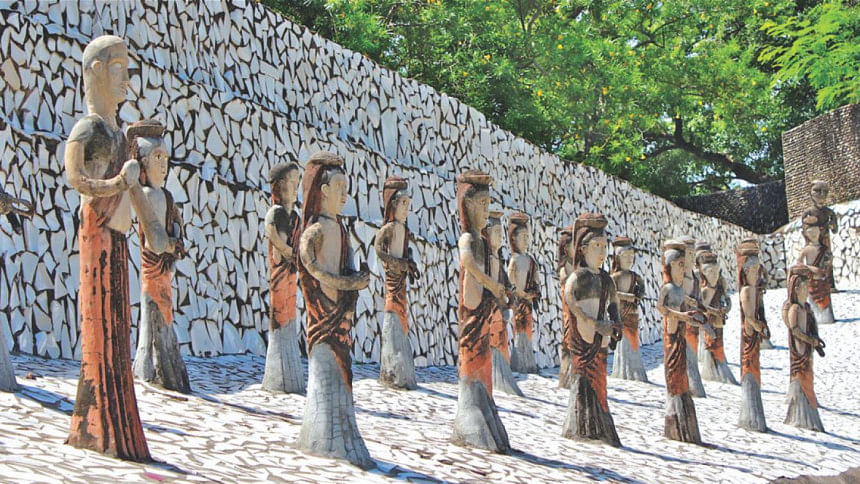
With thousands of years of history and heritage behind it, today India is recognised as being one of the largest multicultural countries in Asia, and certainly the world. Various parts of India were ruled by numerous Middle kingdoms, among which the Gupta Empire stands out. This period bore witness to a Hindu religious and intellectual renaissance, and is known as the Golden Age of India. During this period, aspects of Indian civilisation, administration, culture, and religion spread around Asia, while kingdoms in southern India forged maritime business links with the Roman Empire, from around 77 CE. Greater India became established as a result of the spread of Indian cultural influence throughout Southeast Asia. Between the colonial period of 1501 to 1961, India was ruled by the Portuguese, Dutch, French, and British, among many others.
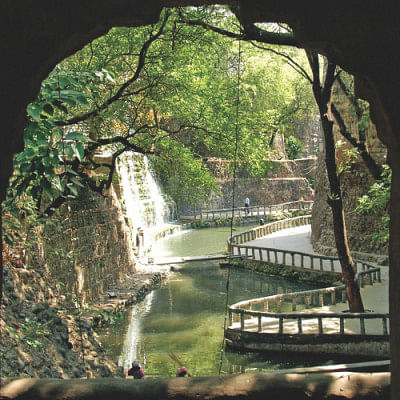
I have visited India several times, however there are still many provinces I have yet to visit. My trip from Delhi to Chandigarh was especially memorable. Chandigarh is one of the best-planned cities in India, with architecture which is world-renowned and a quality of life which is unparalleled. As the capital of the states of Punjab and Haryana, it is a prestigious city. As the face of modern India, Chandigarh is the manifestation of a dream that Pt. Jawahar Lal Nehru envisaged and architect Le Corbusier executed.
It may seem contradictory to describe a city as being serene, as opposed to frenetic, but Chandigarh is one of those rare epitomes of modernisation co-existing with nature's preservation. The trees and plants here are as much a part of the construction plans as the buildings and the roads. India's first planned city is a rich, prosperous, spic and span, green city rightly referred to as 'The City Beautiful'.
Our first impression was of the city streets. Their traffic islands are round and most of them, as well as the roadsides, form a beautiful harmony between planned and unplanned landscape. Le Corbusier made this city plan based on grid. Our first stop was to the Zakir Hussain Rose Garden, a botanical garden that is spread over 30 acres of land, with 50,000 rose-bushes of 1600 different species. Named after India's former president, Zakir Hussain, and created in 1967 under the guidance of Dr M.S. Randhawa, Chandigarh's first chief commissioner, the garden has the distinction of being one of Asia's largest. The garden has not only roses, but also trees of medicinal value.
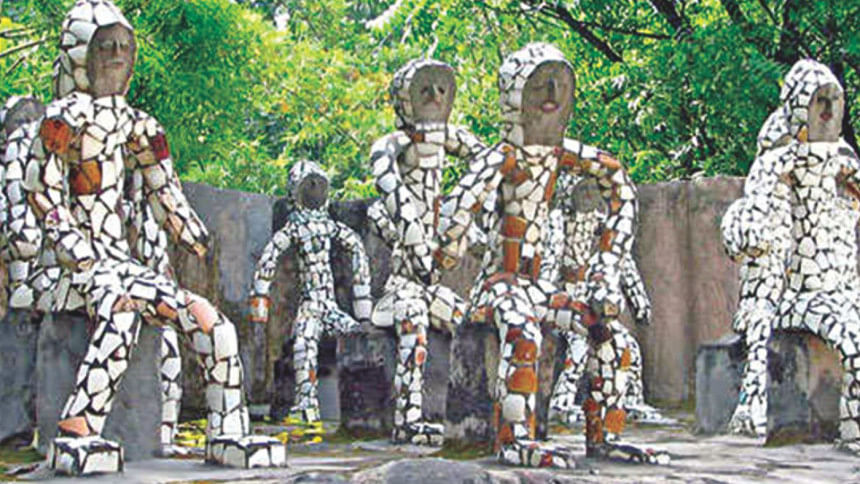
Some of the medicinal plants that can be spotted here are bel, bahera, harar, camphor and yellow gulmohar. The rose plants have been planted in carved-out lawns and flower beds. We were lucky that our trip coincided with the flower festival being held at the garden. We are used to seeing pink, red and white roses but at the garden we got the chance to see black and purple ones too. Among other events, the Zakir Rose Garden also serves as the venue for the annual Rose Festival, a major cultural event in Chandigarh during either February or March. Celebrated mainly as a tribute to the magnificence of the rose itself, the attractions include food, drinks, joyrides and contests of varying nature, such as photography, gardening, landscaping, bonsai, and Rose Prince and Princess. The contests are open to residents and institutions from nearby places.
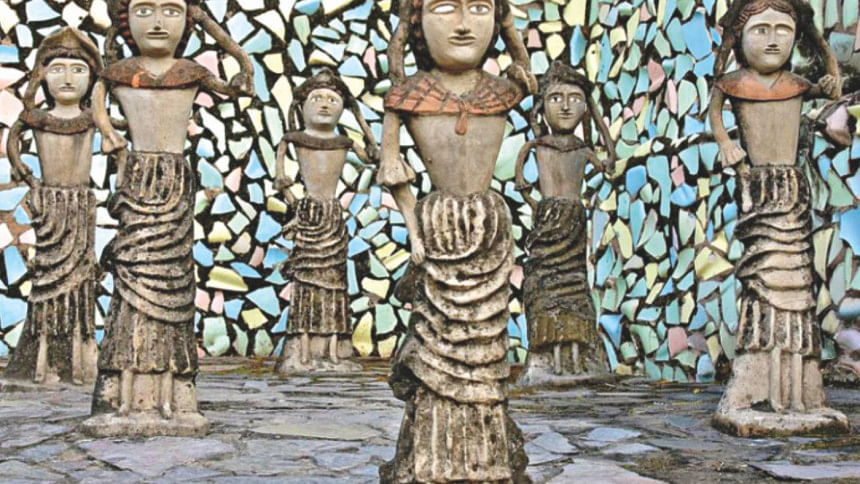
Our main destination was the Nek Chand Garden. This is not a simple green botanical garden, but one of the most renowned craft gardens of the world. Nek Chand has a rock garden that boasts waterfalls, hidden passages, pavilions and piazzas set in a jungle landscape that was once a derelict wasteland. Armies of doll-like figures, magical birds and beasts fashioned from industrial waste and scraps of junk materials are the sentinels of this enchanted garden. Broken china, slag from foundries, metal scraps, even leftover cement blocks from the city that Le Corbusier built have been recycled in his Nek Chand visionary environment.
Although it has been ten years since I visited that garden, I still remember the wonderful sculptures fondly. The artist and sculptor, Nek Chand, passed away at the age of ninety in June earlier this year. Despite the deep sorrow that we felt, his legacy still reminds us of this great person – a self-taught artist with an honest, loving and childish mind. "He played with any material," his son Sani Chand said. "Only playing, just like kids." Those who knew Mr. Chand described him as humble, despite the praise he received. He strolled through the garden often, choosing to spend time with local people, although he was a friend to many prominent citizens.
Mr. Chand was born on December 15th, 1924, in the village of Barian Kalan, which became part of Pakistan after the partition. He arrived in the city of Chandigarh just after India's independence in 1947. He worked for the government as a road inspector but became fascinated by objects that he found, such as weather-beaten rocks.
In his spare time, Chand began collecting materials from demolition sites around the city. He recycled these materials into his own vision of the divine kingdom of Sukrani, choosing a gorge in a forest near Sukhna Lake for his work. The gorge had been designated as for land conservation, where nothing could be built on. Chand's work was illegal, but he was able to hide it for eighteen years before it was discovered by the authorities in 1975. By this time, it had grown into a 13 acre complex of interlinked courtyards, each filled with hundreds of pottery-covered concrete sculptures of dancers, musicians and animals. Chand created the majority of the sculptures out of a cement and sand mix before adding a final coating of smoothly burnished pure cement.
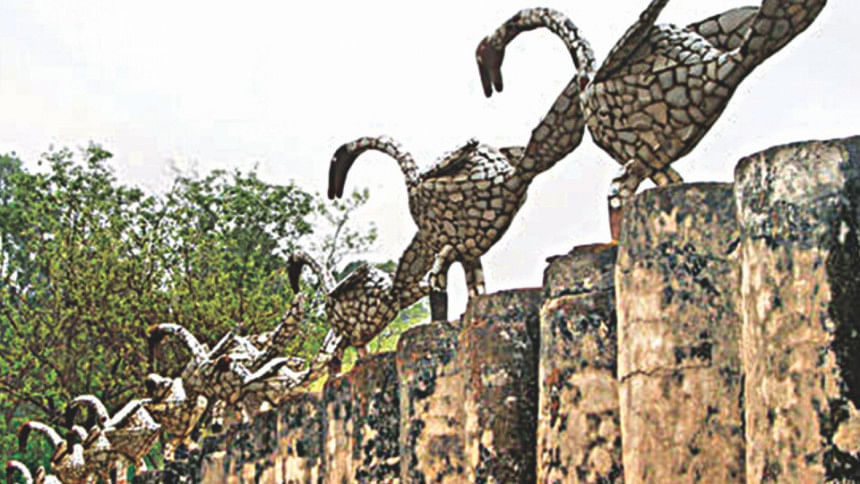
His work was in serious danger of being demolished, but he was able to get public opinion on his side, and in 1986 the park was inaugurated as a public space. Nek Chand was given a salary, as "Sub-Divisional Engineer of Rock Garden", along with a workforce of 50 labourers so that he could concentrate full-time on his work. It even appeared on an Indian stamp in 1983. The Rock Garden is still made out of recycled materials, and with the government's help, Chand was able to set up collection centres around the city for waste, especially rags and broken ceramics. By night he slipped onto a patch of land and artfully arranged rocks and construction waste behind a barricade of empty tar drums.
When Chand left the country on a lecture tour in 1996, the city withdrew its funding, and vandals attacked the park, after which The Rock Garden Society took over the administration and upkeep of this unique visionary environment. The garden is visited by over five thousand people every day, the second most popular location in India, after the Taj Mahal, with a total of more than twelve million visitors since its inception.
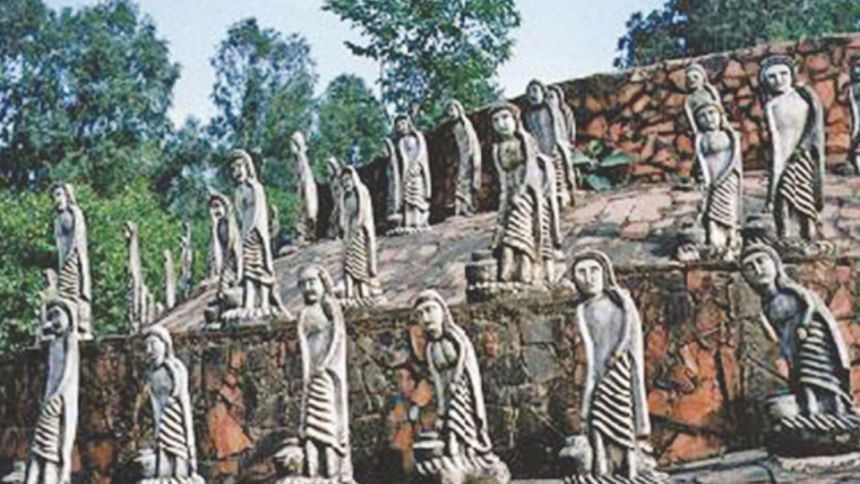
We headed to this splendid stone garden during the afternoon; initially we thought we could finish the tour of the garden within one hour, but it is really impossible; we found one magical room after another, waiting to be explored. We were enthralled. Chand created enormous innovative traditional craft rooms, each carrying a different Indian style of living. He was not only a great sculptor, but also an anthropologist and an interior designer. The rooms are decorated with furniture and human figures. These doll figures such as "Mother and Child" capture his unique creative spirit.
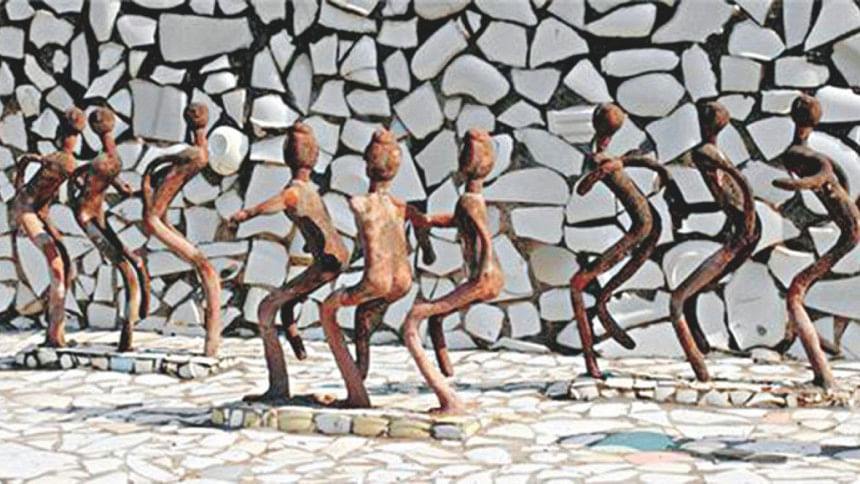
Rag dolls of mythical figures sit in niches made of broken tiles, industrial slag and clay beads. The main sitting room is decorated with Nek Chand's home-grown building models. The old wicker chairs are enlivened with bright colours sewn together by hand. Chand's bathroom design and installations are also different. Normal tiles in a small area of the Spartan bathroom are inventively used to contrast with walls lined with broken tiles. At the end part of garden we found some beautiful open space with various plants. The setting was dramatic, with the sky turning a dark grey after the sun had set, coupled with the vivid greens of all the plants around us.
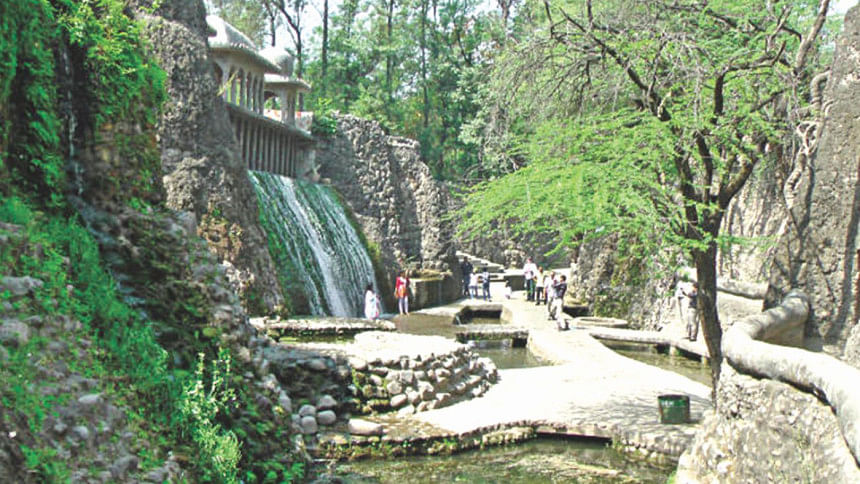
The story of the Rock Garden's humble beginnings have become somewhat of a local lore. "I started building this garden as a hobby in the 1950s", he said in an interview with Agency France-Presse in December. "I had many ideas, I was thinking all the time. I saw beauty and art in what people said was junk."
Chand's statues have found their way into museums across the world, including the Capitol Children's Museum in Washington D.C., the American Folk Art Museum in New York City and the Collection de l'Art Brut in Lausanne, Switzerland. The John Michael Kohler Arts Centre in Wisconsin, USA owns the largest collection of Chand's work outside of Chandigarh.
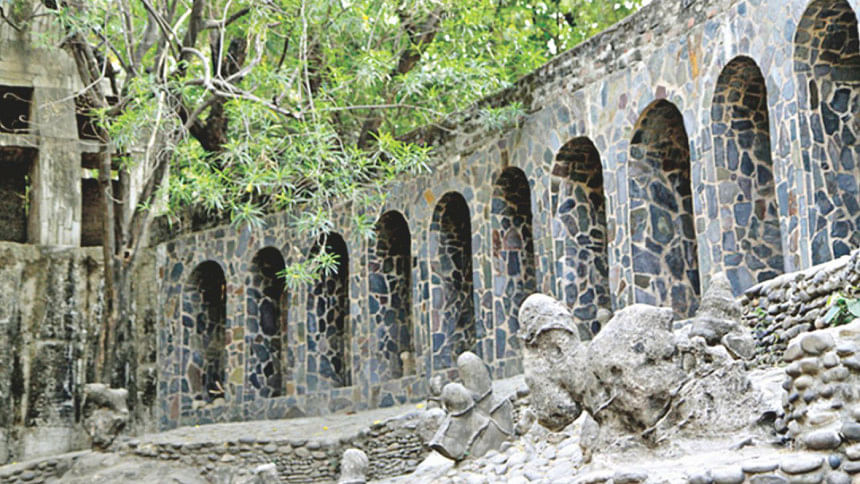
Nek Chand has received many accolades, including a Padma Shri, one of India's highest civilian honours, and has held a handful of exhibitions across the world. India's Prime Minister, Narendra Modi, issued a statement saying that Nek Chand "will always be remembered for his artistic genius and fabulous creation that is cherished by many."
Nazneen Haque Mimi
Interior Consultant
JOURNEYMAN
E-mail: [email protected]
Photo: Collected

 For all latest news, follow The Daily Star's Google News channel.
For all latest news, follow The Daily Star's Google News channel. 


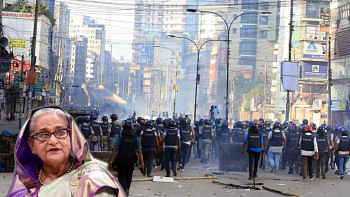
Comments